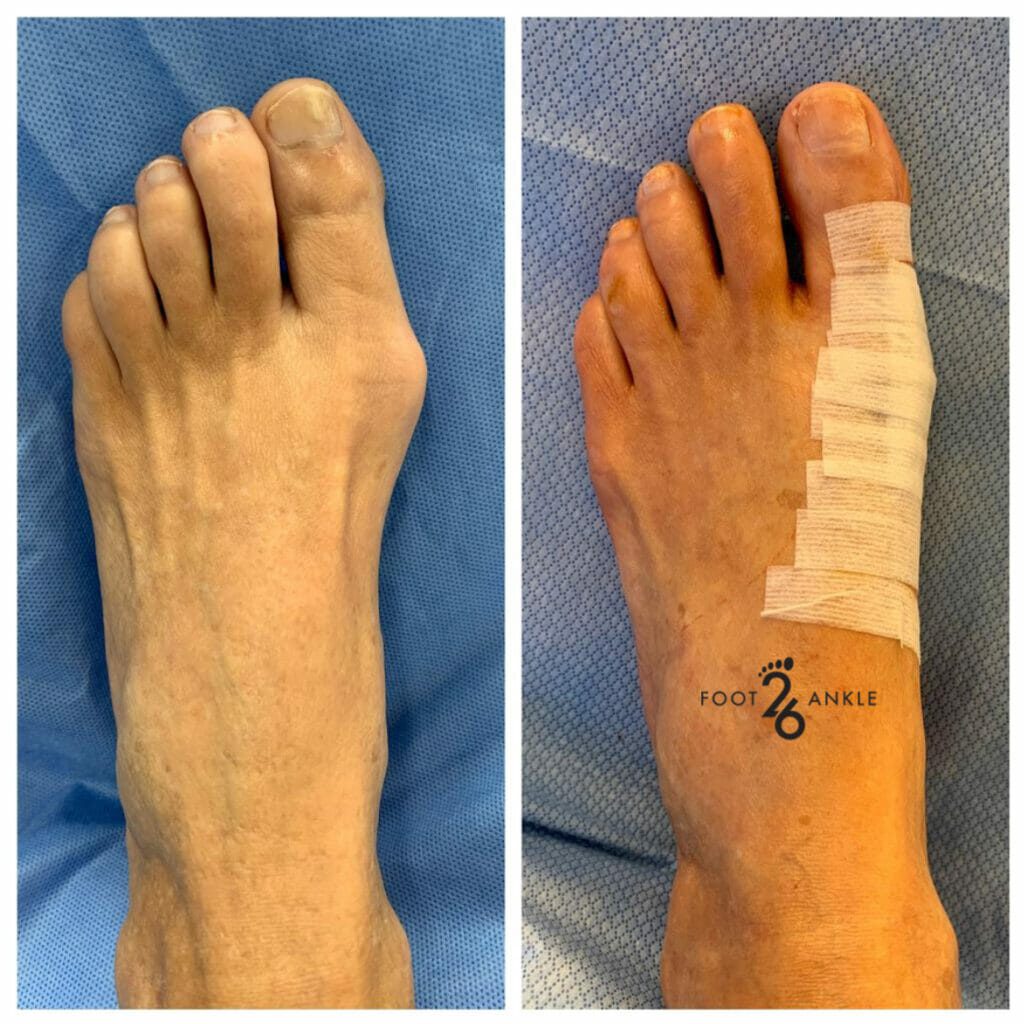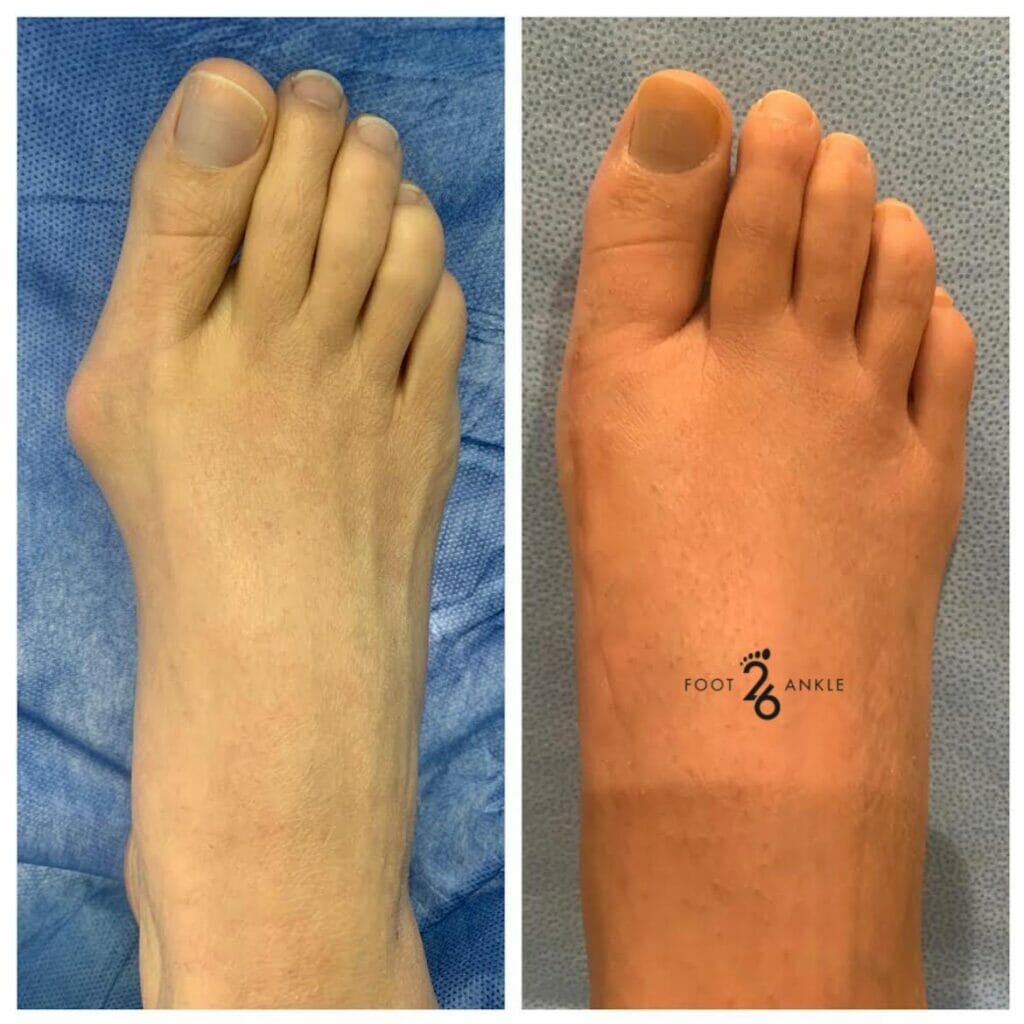The 26 Review
- What is a Standard Bunion Repair Bunion surgery, or Bunionectomy, is a corrective treatment for mild to moderate bunions
- How A small incision is made along the big toe joint. Prominent bone is removed and the 1st metatarsal is cut and shifted into a straight position. This is stabilized with pins and screws.
- Why Surgery is recommended for those seeking improved function and pain relief
- Recommended for Patients experiencing prominent bone pain, stiffness, swelling, and chronic inflammation
- Length of Surgery 60 minutes or less
- Downtime 6 weeks of moving around slowly. Ability to immediate walk in a protective walking boot
Big Toe Joint: Bunion Repair: Standard E-Book
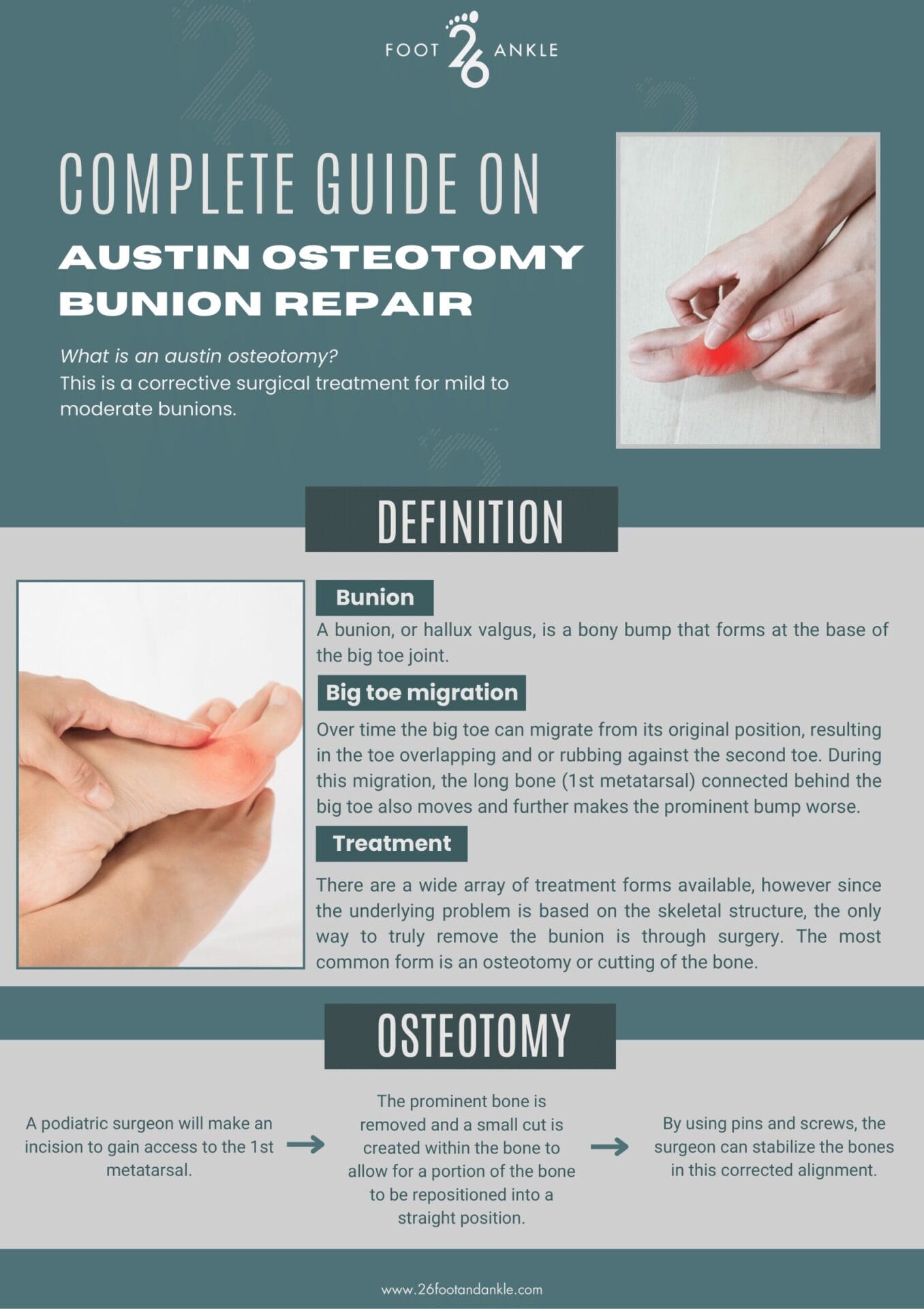
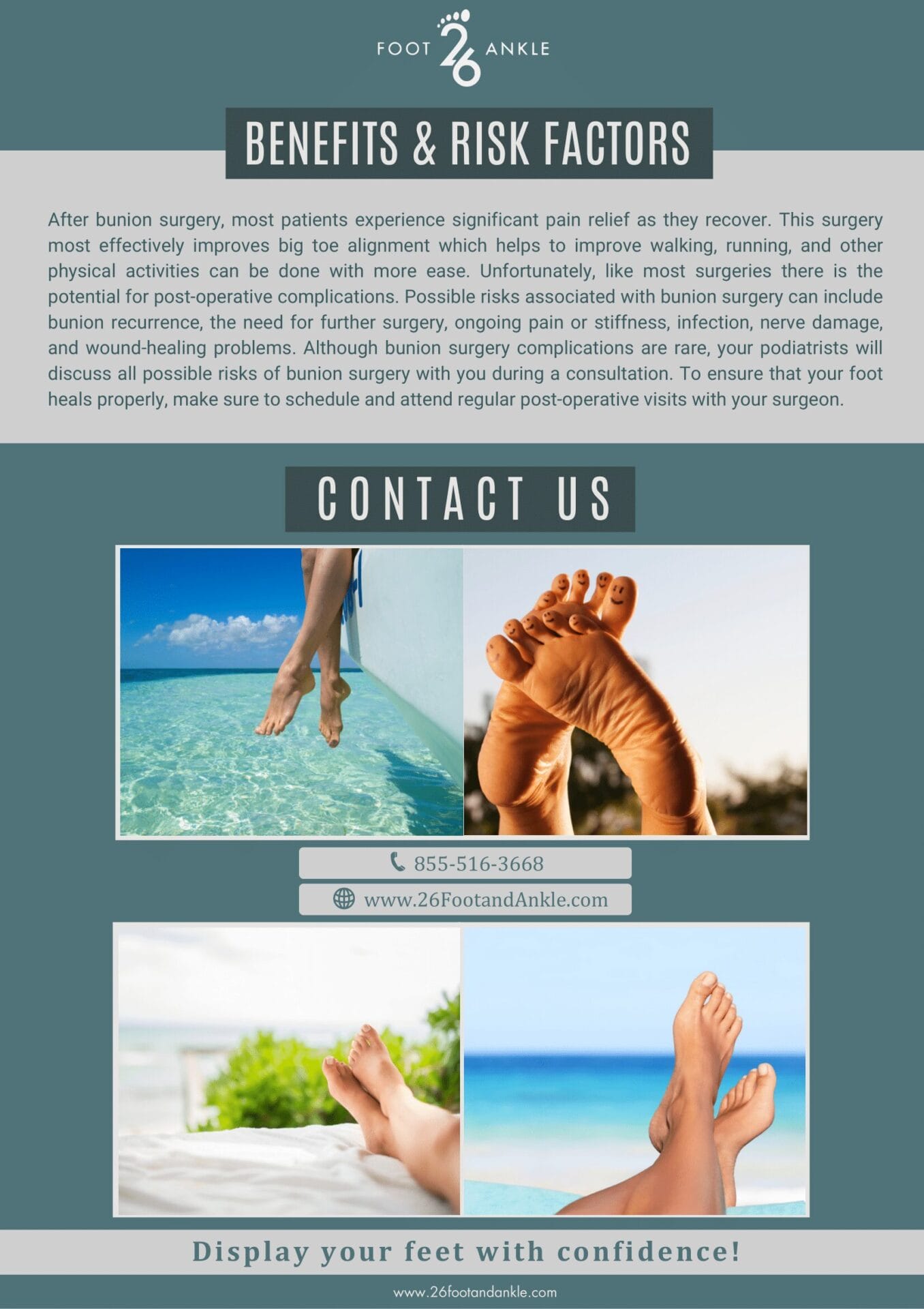
BIG TOE JOINT STANDARD REPAIR
Discover the solution to your big toe joint issues! Our ebook breaks down the essentials of standard bunion repair, offering easy-to-follow insights and practical advice. Say goodbye to discomfort — download now and step into a world of worry free mobility!
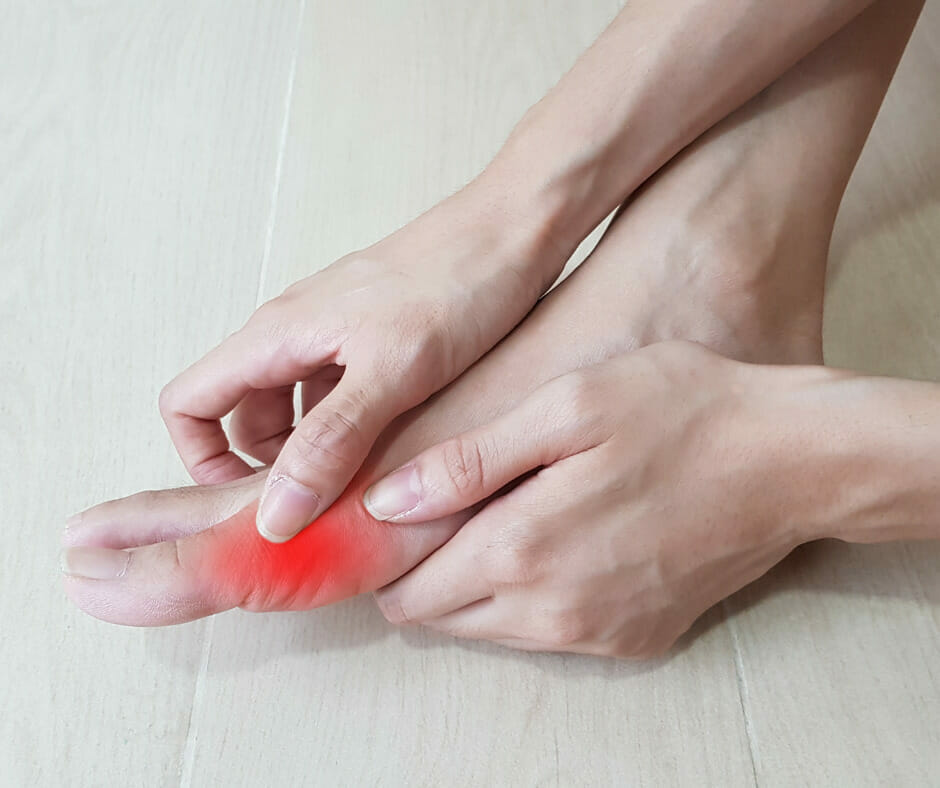
Let’s take a closer look…
A bunion, or hallux valgus, is a bony bump that forms at the base of the big toe joint. Over time the big toe can migrate from its original position, resulting in the toe overlapping and or rubbing against the second toe. During this migration, the long bone (1st metatarsal) connected behind the big toe also moves and further makes the prominent bump worse. These bumps typically form and grow on the outside edge of the foot. There are a wide array of treatment forms available, however since the underlying problem is based on the skeletal structure, the only way to truly remove the bunion is through surgery.
The most common form of surgery is an Osteotomy or cutting of the bone. During an Osteotomy, a podiatric surgeon will make a small incision to gain access to the 1st metatarsal. The prominent bone is removed and then a small cut is created within the bone to allow for a portion of the bone to be repositioned into a straight position. Then by using pins and screws, the surgeon can stabilize the bones in this corrected alignment. Those who are experiencing stiff toes, drifting toes, pain, swelling, and inflammation that does not dissipate should consider setting up a consultation with a podiatrist to formulate the best plan of action.
Procedure Details: Pre, During & Post Surgery Expectations
Before surgery is recommended by your healthcare provider, consider good-fitting footwear, as well as splints, padded bunion socks, and orthotics to reposition the big toe and/or provide more padding. Prior to the day of surgery, patients may be asked to fast 8 hours before the procedure, generally meaning no food after midnight. On the day of the surgical appointment, the surgeon will apply a numbing agent around the toe. Many times this is in combination with a light form of monitored anesthesia to keep patients comfortable during the procedure. To ensure the procedure goes as smoothly as possible, inform your podiatrist of any health concerns, activity levels, and any other factors that could affect the procedure and recovery.
During the surgery, the surgeon will make small incisions along the big toe joint, allowing access to the misaligned bone. Once the misaligned bone is visible, surgeons may utilize metal plates, small screws, and wires to ensure the big toe is in the correct position. Depending on the severity of the bunion, there is a possibility that portions of the bone, ligaments, and tendons may be realigned or removed for permanent results. As mentioned previously, this procedure typically takes 60 minutes or less, depending on the severity of the bunion. Once the surgery has concluded, all openings will be closed by stitches and sterilized bandages will be applied.
Bunion surgery is an outpatient procedure, meaning patients can return home the same day. After the surgery has concluded, patients are urged to wait in a recovery room for 1 to 2 hours, or until the medical professional determines the patient is safe to leave. Patients are required to have someone drive them home after the surgery. During recovery, there are a few instructions patients will receive.
• Avoid applying weight to the big toe
• Elevate the foot to reduce swelling and inflammation
• Apply ice behind the knee and on top of the foot.
• Ensure bandages and stitches stay dry
• Take any pain medications that are prescribed
During the first 2 weeks of recovery, patients should enlist help for basic household chores and meal preparation, to put the least amount of strain on the big toe. To move comfortably and safely, the use of crutches, a scooter, or a walker may be advised, however, most often only a protective walking boot is needed. After 4 – 6 weeks, patients will begin to regain most of their foot function and can begin transferring back to a normal closed shoe. Swelling may last around 6 to 9 months post-operative and specific physical therapy exercises can aid in restoring foot strength and range of motion. For additional tips to help ensure a smooth post-operative course, read more here: Foot Surgery Recovery Game Plan
Benefits and Risk Factors
Like most surgeries there are significant benefits, as well as potential drawbacks. After bunion surgery, most patients experience significant pain relief as they recover. This surgery also improves big toe alignment most effectively. Accompanied with these benefits, by improving your big toe alignment, walking, running, and other physical activities can be done with more ease. Seeing as removing bunions surgically is the only permanent cure, an Osteotomy is incredibly worth it for those seeking to ease pain and regain the ability to do the things they love again. Unfortunately, like most surgeries there is the potential for post-operative complications. Possible risks associated with bunion surgery can include bunion recurrence, the need for further surgery, ongoing pain or stiffness, infection, nerve damage, and wound-healing problems. Although bunion surgery complications are rare, your podiatrists will discuss all possible risks of bunion surgery with you during a consultation. As mentioned before, after 4 to 6 weeks, patients will regain most foot function and at the 2 month mark, patients will be allowed to resume most physical activities. To ensure that your foot heals properly, make sure to schedule and attend regular post-operative visits with your podiatrist.
